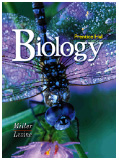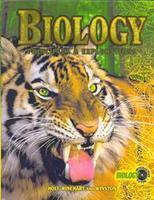CELLS
Cell Parts
Cheek Cell Lab - observe cheek cells under the microscope
Cheek Cell Virtual Lab – if you missed it in class
Animal Cell Coloring - color a typical animal cell
Plant Cell Coloring - color a typical plant cell
Plant Cell Lab - microscope observation of onion and elodea
Plant Cell Lab Makeup - microscope observation of onion and elodea, if students missed the lab that day they can view a site with pictures to complete lab handout
Plant Cell Virtual Lab – use a virtual microscope to view plant cells.
Comparing Plant and Animal Cells – looks at cheek and onion cells
Prokaryote Coloring - color a typical bacteria cell
Cell City Analogy - compares a cell to a city
Cells Alive (internet) - view cells on the web
Cell Model – create a cell from household and kitchen items, rubric included
Cell Research & Design - research cells on the web, use computer to create your own cell
Cell Rap – song or poem to describe the parts of the cell
Cell Reproduction
Mitosis in an Onion – view picture, identify stages
Cell Cycle Label – label a picture of the stages of mitosis
Onion Root Tip Lab – view real cells with a microscope
Onion and Whitefish Virtual Lab – view cells, if you missed the classroom lab
Mitosis Internet Lesson – view animations of mitosis; questions
Meiosis Internet Lesson - view animations of meiosis, compare to mitosis
Cell Cycle Cut and Paste - students arrange words and draw arrows to illustrate mitosis
Cell Processes
Diffusion - model diffusion using a plastic baggie
Observing Osmosis – use an egg, vinegar, corn syrup, will take a few days
Salt and Elodea – quick lab to observe the effects of salt water on elodea cells
Diffusion and Osmosis Crossword Puzzle - vocabulary review
Chemiosmosis Coloring – color the membrane and the steps involved in the production of ATP
Cellular Respiration Concept Map – map of the steps involved in cellular respiration
Cellular Respiration – AP Lab 5, virtual lab at LabBench
Osmosis in Cells - AP Lab 1, modified
Plant Pigments – AP Lab 4, modified
Photosynthesis Simulation – use simulator online to adjust light settings and gather data on ATP production
Acids and Bases - basic coloring showing how water dissociates into ions, pH scale
Enzyme Lab – compare the rates catalase breaks down hydrogen peroxide
Enzyme Weblab – also looks at reaction rates, completed online
Organic Compounds – concept map, students fill in terms
Phyla
Animal
Symmetry - drawings of animals, students identify types of symmetry
Animal
Kingdom Survey Lab - introductory lab, set up stations with specimens
Animal
Phyla Matching - match the phylum to pictures and descriptions
Characteristics
of Life - make a concept map
Kingdom Protista
Ameba
Coloring-
color the structures of an ameba; pseudopodia, vacuole, nucleus.
Paramecium
Coloring-
color paramecium, vacuole, mouth pore, macronucleus, cilia.
Euglena
Coloring - color euglena; flagella, chloroplast, pellicle...
Kingdom
Protista Concept Map - organize the types of protists by characteristic
Ameba
& Paramecium Lab - view both specimens, compare and draw
Algae
Lab - compare 3 types of algae: volvox, spirogyra, and euglena
Biodiversity
of Ponds - sample pond water, identify organisms (protists, arthropods..ect)
Protista
Crossword - vocabulary; vacuole, paramecium, algae, malaria..etc
Phylum Porifera & Phylum Cnidaria
Sponge
Anatomy - sponge image; students label amebocytes, collar cells, spicules...
Sponge
Coloring - another anatomy page, color the structures
Hydra
Anatomy - hydra image; students label tentacles, cnidocytes, buds.
.
Hydra Lab - anatomy and behavior of
hydra .
Phylum Platyhelminthes & Nematoda
Observation of a Planarian - view a live planarian and observe regeneration
Phylum Mollusca
Squid
Dissection - external and internal structures, using real squids
Virtual
Squid - online dissection photos for students to view, labeling and
questions, makeup lab
Mollusk
Chart - compares cephalopods, gastroods, and bivalves
Phylum Annelida
Observation
of a Live Earthworm
Earthworm
Dissection
Earthworm
Labeling
Earthworm -the Adventures of Herman
Mollusk
and Annelid Crossword Puzzle
Phylum Arthropoda
Arthropod
Poetry - short riddles (poems) where students have to guess the associated
vocab
Arthropod
Chart - students complete a chart outlining the characteristics of
arthropod subphyla
Arthropod Coloring -
color and label parts, compare types
Phylum Chordata
Amniote
Egg Coloring - learn egg structures; yolk, allantois, amnion, chorion
Comparing
a Human and Avian Skeleton - coloring and bone identification
Bird
Beaks and Feet - view pictures of birds, make inferences about their
diet and habitat
Animal
Diversity Web - explore website, information on classes, orders and
relationships
Virtual
Field Trip to the San Diego Zoo - explore the site, answer questions
Zoo-logical - a logic puzzle about dinosaurs, mainly for fun
Fish
Temperature Lab - investigate how the respiration rate of a fish changes
with temperate; graphing
Fish Temperature
Make-up Lab - same as above, online version for students not in class
Observation
of a Living Fish - simple lab where students observe a fish in a beaker
Mammal Chart - fill in a chart on the mammal orders; write descriptions and relatives
Animal Behavior
Territorial Behavior in Crickets - mark and observe crickets as they interact with each other
Inheritance
Simple
Genetics Practice - using mendelian genetics and punnett squares
Heredity
Simulation - using monsters and popsicle sticks to show how alleles
are inherited
Penny
Genetics - flip a coin to compare actual outcomes versus predicted
outcomes from a punnett square
Heredity Wordsearch - fill in the blank, find terms
Genetic
Crosses with two traits - basic mendel cross
Genetic
Crosses with two traits (hard) - basic mendel cross
Dihybrid
Crosses in Guinea Pigs (pdf) ![]() -
step through on how to do a 4x4 punnett square
-
step through on how to do a 4x4 punnett square
Codominance
& Incomplete Dominance-
basic crosses
Oompa Loompa Genetics - basic crosses and problem sets, using oompa loompas
Human
Genetics Survey - class takes a survey of human traits, such as ear
points
Modeling
Chromosomal Inheritance - use pipe cleaners to show how genes are
inherited; independent assortment, segregation, sex-linkage
Linkage
Group Simulation - uses pipe cleaners and beads, students construct
chromosomes with alleles and perform crosses, predicting outcomes (advanced)
Design-a-Species - using the rules of inheritance (mendel), create an organism; dominance
& recessiveness, multiple allele traits, codominance
Inheritance
and Eye Color - uses a simulation to show how multiple alleles can
influence a single trait (eye color)
Hardy-Weinberg
Problem Set - statistical analysis, using HW equation
Corn Genetics
and Chi Square - statistical analysis, using preserved corn and counting
kernals
Corn
Genetics - grow corn, 3:1 albino ratio, lab report analyzes F1, F2
crosses
Fruit
Fly Genetics - virtual lab where you cross different flies, gather
data and statistically analyze the results
Fruit
Fly (Drosophila) Virtual Lab - more extensive virtual lab through
a program created by Virtual Courseware, requires set up by teacher.
Meiosis
Label - look at cells in various stages of meiosis, identify and order
Meiosis
Internet Lesson - look at animations of meiosis and answer questions
DNA
DNA
Coloring - basic image of DNA and RNA
DNA Crossword - basic terms
Transcription
& Translation Coloring - shows structures involved, nucleotides,
base pair rules, amino acids
DNA
Analysis - simulate DNA recombination using paper slips and sequences
DNA
Extraction - instructions for extracting DNA, best used as a demonstration
DNA
in Snorks - analyze and transcribe DNA sequences, construct a creature
based on that sequence
How
DNA Controls the Workings of a Cell - examine a DNA sequence, transcribe
and translate
DNA Sequencing
in Bacteria - website simulates the sequencing of bacterial DNA, PCR
techniques
Who
Ate The Cheese - simulate gel electrophoresis to solve a crime
Genetic Science Learning
Center - website, with questions
Genetic Science Ethics- survey as a group ethical questions involved genetics (cloning, gene therapy..)
HIV Coloring - advanced, viral infection & DNA


 If
you are looking for the textbook reading guides for the old textbook,
Holt, Rinehart, Winston's Biology: Principles & Explorations, you
can view the
If
you are looking for the textbook reading guides for the old textbook,
Holt, Rinehart, Winston's Biology: Principles & Explorations, you
can view the